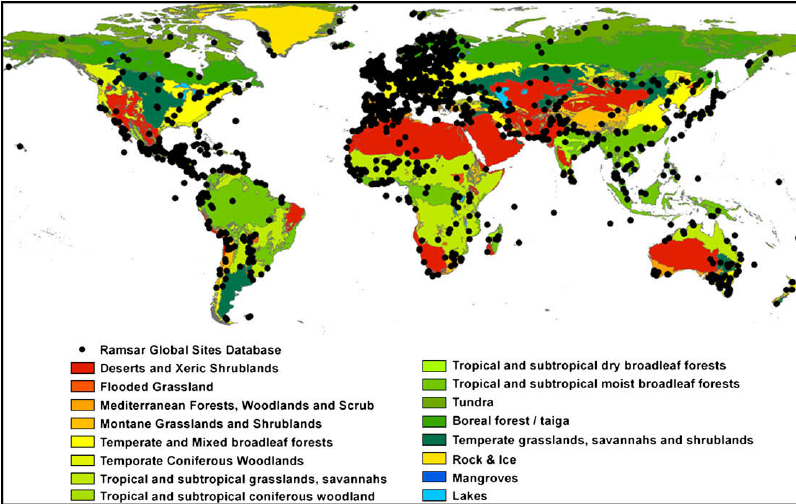The Ramsar sites are the wetland sites which are designated for the international importance under the Ramsar convention. The convention on the wetlands is known as the Ramsar convention. The Ramsar Convention is the international treaty which is used for the sustainable use and the conservation of the wetlands. Ramsar Convention is named in the city of Ramsar in Iran where this convention was signed in 1971. After every three years, the representatives of the contracting parties are meeting at the conference of the contracting parties. The policy-making organs of the convention adopt the decisions, for the administration of the work of the convention, and to improve the ways for the better implementation of the objectives.
Which Wetlands are Considered as Ramsar Sites?
According to the Ramsar convention, a wide variety of the human-made, and the natural habitats, ranging from the rivers to the coral reefs are classified as the wetlands. These wetlands include the marshes, swamps, billabongs, mudflats, salt marshes, lakes, peat bogs, coral reefs, fens, mangroves, and any other bodies of water, either natural or artificially made, temporary or the permanent. The water in these bodies, can be static or flowing. It could be saline, brackish, or freshwater. Coastal, inland rivers, and the marine water that is up to the depth of the six meters at the low tide are included in the Ramsar sites. The underground wetlands are also included in the Ramsar wetlands.

Agreement of Countries to Manage the Ramsar Sites
The Ramsar convention encourages to designate the sites, containing the unique, and the representative wetlands, or the wetlands which are important for the conservation of the biological diversity. After designation, these sites are added to the list of the convention’s wetlands of the international importance and they are considered as the Ramsar sites. For designating the wetland as the Ramsar site the countries are agreed for establishing and overseeing the management framework for the conservation of the wetland, by ensuring its wise use.
Importance of Wetlands in Terms of Biodiversity Perspectives
The conventions also broadly define the wise use to maintain the ecological characters of the wetland. Due to their hydrological, zoological, botanical, and ecological importance, the wetlands gains international importance. The criteria for the inclusion of wetland site to the Ramsar sites irreplaceable and includes the vulnerable habitats and the species. So, many areas are likely to have a high global value in terms of biodiversity. There is the involvement of the indigenous populations and the local communities for the conservation of these sites.
